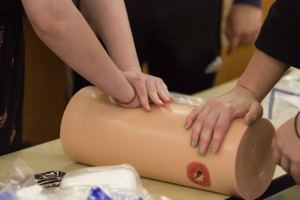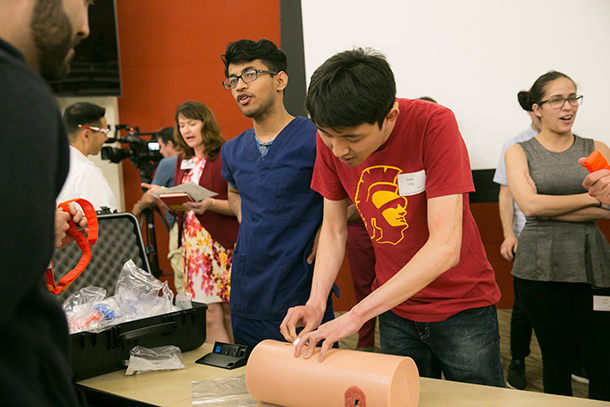A person who is bleeding can die from blood loss within minutes. In fact, according to BleedingControl.org, 20 percent of people who have died from traumatic injuries could have survived with immediate bleeding control. Bystander knowledge of proper bleeding control techniques, including how to use hands, dressings and tourniquets, can mean the difference between life and death.
On March 30, the Keck School of Medicine of USC held a Stop the Bleed Train-the-Trainer event for nearly 70 current medical students. Stop the Bleed is a national campaign to encourage bystanders to become trained to help in an emergency before professional help arrives.
During the event, the students engaged in hands-on training, allowing them to master the skills needed to train others to stop bleeding resulting from traumatic injuries.

Students practice compression during a Stop the Bleed event. (Photo/Ricardo Carrasco III)
Second-year Keck School medical student Maryam Masood helped organize the training session. “While this training prepares us to act in scary mass casualty situations, it can come in handy for everyday situations like car accidents,” Masood said.
Kenji Inaba, MD, associate professor of surgery (clinical scholar) at the Keck School and director of the general surgery program, led the train-the-trainer session.
“Our goal is to get everyone in L.A. trained on simple control concepts to stop hemorrhaging,” Inaba said. “We have spent thousands of hours training various groups in the community. If even one life is saved, all the training time is worth it.”
Inaba and his team are working with local community groups, schools and business to share the life-saving skills.
Stop the Bleed training is organized by the American College of Surgeons Committee on Trauma.
— Virginia Baca


